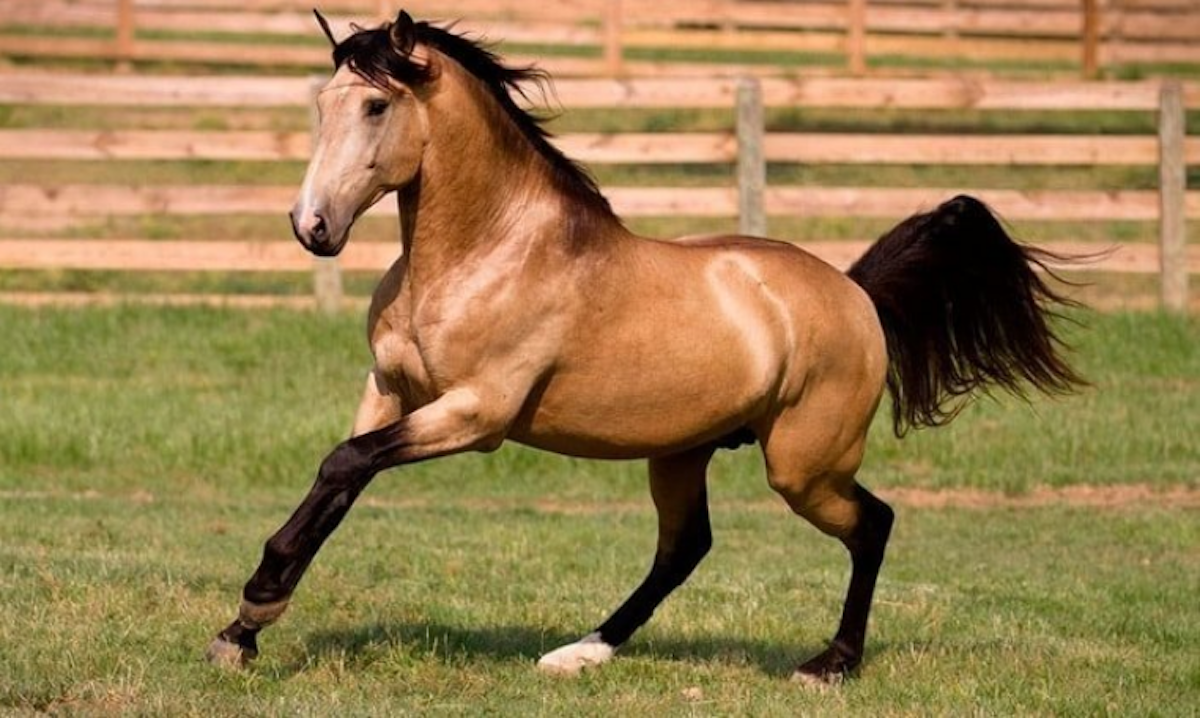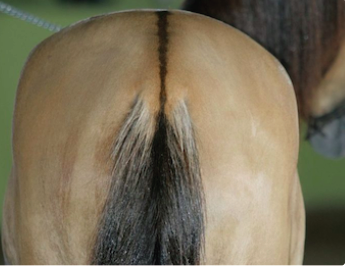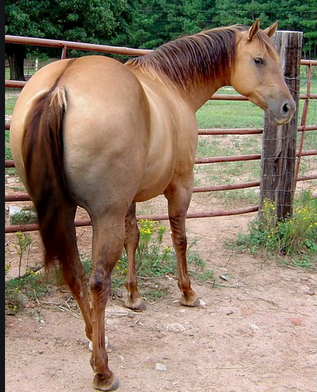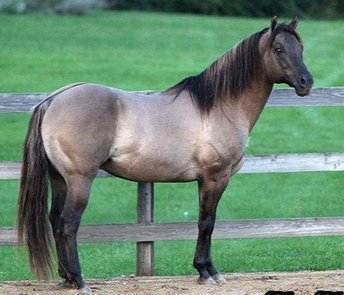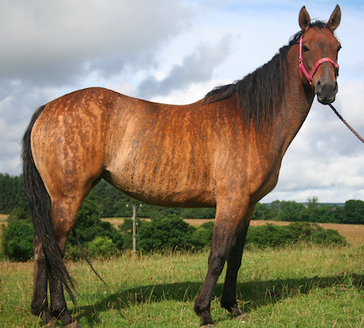Is Buckskin a Color or a Breed of Horse?
Here's the origin and meaning of the term.
Buckskin is not a mere "color" in the equine world. It is a breed.
According to genetic analyses (which can be found at the Oklahoma State University Department of Animal Science website), the true Buckskin horse is a breed that traces its lineage through a direct line of Dun or Buckskin colored ancestors, as far back as recorded history of the animal are available.
The International Buckskin Horse Association is the worldʼs largest registry of Buckskin and Dun Horses. Unfortunately, they donʼt post information about the number of horses in their registry, so it is difficult to assess the prevalence of these horses. Neither does the American Buckskin Horse Registry.
A buckskin horse has a cream-colored body with black points (mane, tail, ears, and
legs). The color is genetically coded. A buckskin is a horse that has a bay base coat (black
or dark brown mane, tail, and legs) plus the cream gene. The horse in the opening photo above is a buckskin. Here are some related interesting facts:
According to genetic analyses (which can be found at the Oklahoma State University Department of Animal Science website), the true Buckskin horse is a breed that traces its lineage through a direct line of Dun or Buckskin colored ancestors, as far back as recorded history of the animal are available.
The International Buckskin Horse Association is the worldʼs largest registry of Buckskin and Dun Horses. Unfortunately, they donʼt post information about the number of horses in their registry, so it is difficult to assess the prevalence of these horses. Neither does the American Buckskin Horse Registry.
A buckskin horse has a cream-colored body with black points (mane, tail, ears, and
legs). The color is genetically coded. A buckskin is a horse that has a bay base coat (black
or dark brown mane, tail, and legs) plus the cream gene. The horse in the opening photo above is a buckskin. Here are some related interesting facts:
|
Grulla
The body color of a grulla (pronounced grew-ya) is a shade of gray that can range from silver to slate to blue, with dark sepia to black points. The grulla also has a dorsal stripe down its back, and it has no white hairs mixed in the body hairs. This is a grulla stallion named Hollywood Glo Cody. Photo Credit: https://www.stallionsnow.com/stallion-ad-1130668 |
|
Brindle Horse
This coloring is extremely rare because it is a genetic fluke. Most brindle horses are chimeras--a horse created from two genetically-different DNA types. This is believed to occur when non-identical twin embryos fuse into one at an early stage of development. While the horse develops normally within the mare's womb, its organ cells contain two different genotypes. Chimerism has also been documented in cats and even humans. |
Brindles have a distinctive striped appearance, as you can see in the photo above. A brindle dun also has a dorsal stripe. Photo credit: http://equinetapestry.com/2014/04/a-heritable-form-of-brindle-discovered-in-horses/
As long as you’re here, check these out!
Equestrian Products That Make Your Riding and Horse Care Easier and Better!
Six Vital Horse Facts That Every Horse Owner Absolutely Must Know
What Exactly Is A Warmblood?
Horses Can Read Human Facial Expressions--So What is Your Face Saying?
Who Is The Leader of the Horse Herd--The Stallion or the Mare?
Equestrian Products That Make Your Riding and Horse Care Easier and Better!
Six Vital Horse Facts That Every Horse Owner Absolutely Must Know
What Exactly Is A Warmblood?
Horses Can Read Human Facial Expressions--So What is Your Face Saying?
Who Is The Leader of the Horse Herd--The Stallion or the Mare?
Happy riding!
Copyright Denise Cummins Jan 30 2020; Updated June 27, 2024
The Thinking Equestrian
Opening Photo Credit: The Vet Expert https://images.app.goo.gl/QYzqedUVm5zHfdLdA
Copyright Denise Cummins Jan 30 2020; Updated June 27, 2024
The Thinking Equestrian
Opening Photo Credit: The Vet Expert https://images.app.goo.gl/QYzqedUVm5zHfdLdA
